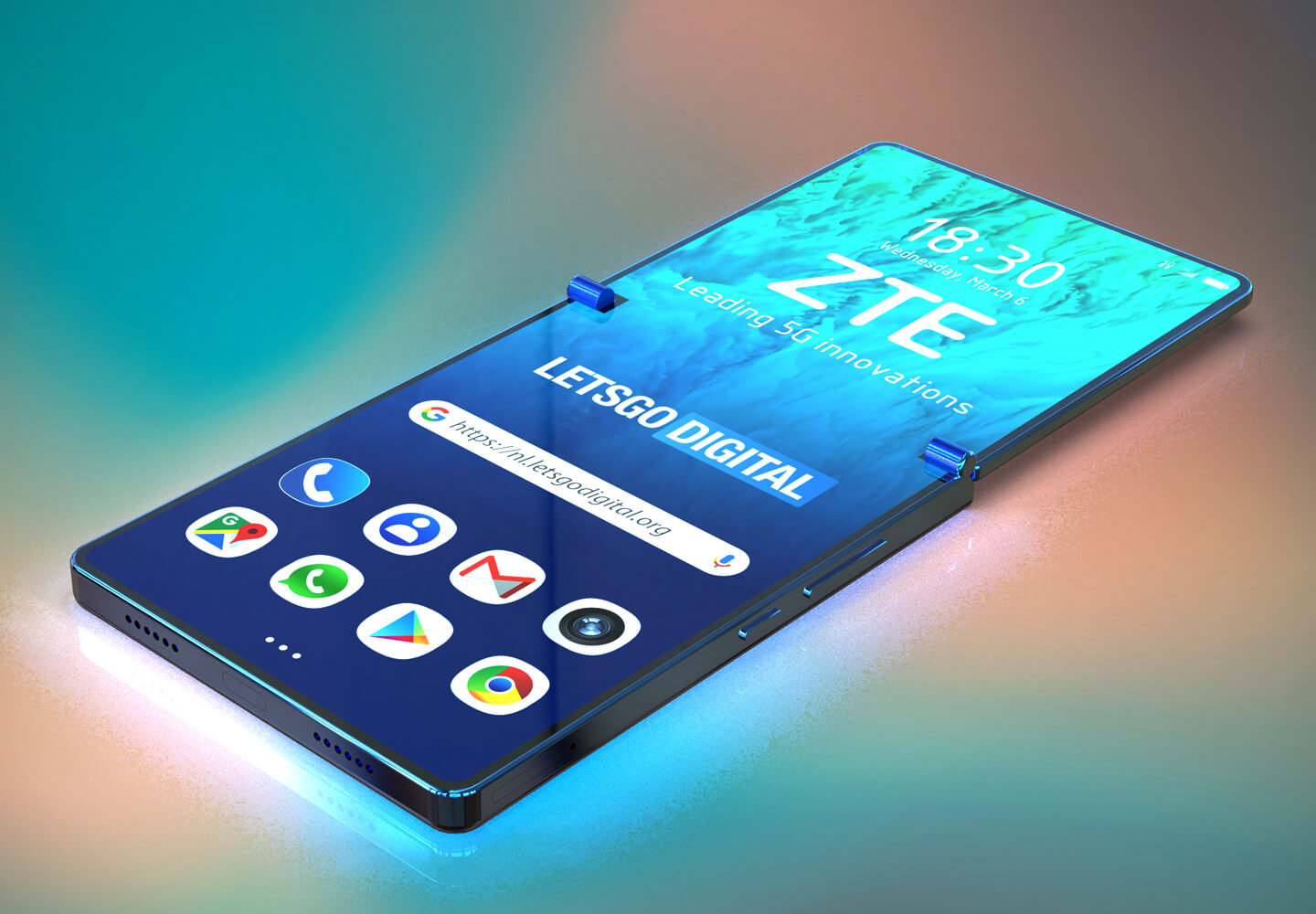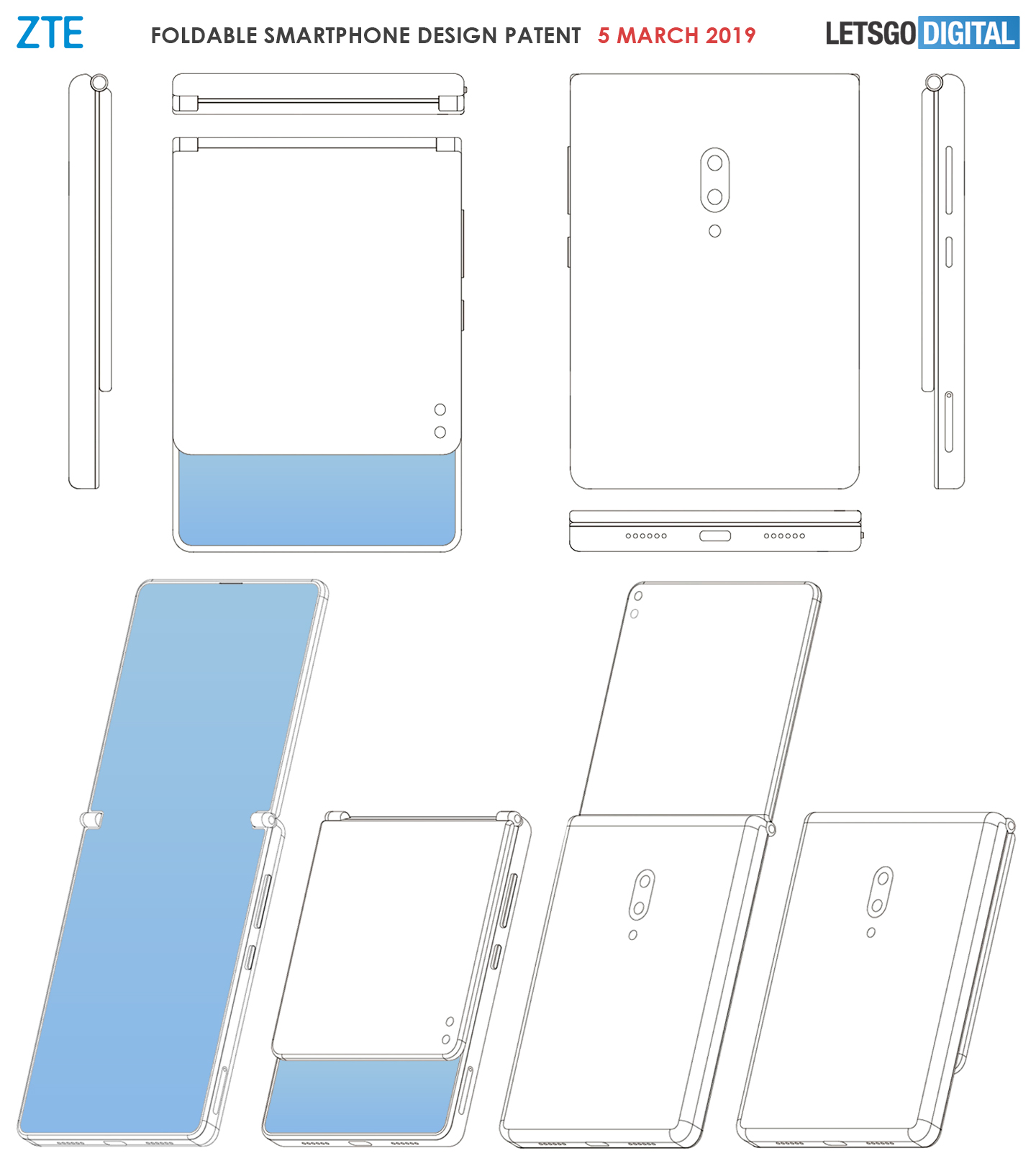Forget Samsung and Huawei: This Is the Best Foldable Phone Design Yet
ZTE has patented a foldable clamshell that looks great, and could shape the future of foldable phones.
ZTE has patented a flexible-display clamshell phone that will halve the size of a regular 6-inch candy bar when folded. It looks great. And the more I look at it, the more I’m convinced that this may be the form factor that wins the foldable phone wars.

Uncovered by Dutch tech blog Let’s Go Digital, the documents filed with the World Intellectual Property Office on March 5 include a lot of detail. Too much to just be a generic patent. Instead, it seems that the patent details a real product.
The illustrations shows a neat clamshell design, with a top half of the screen that doesn’t cover the entirety of the the bottom part when folded, leaving a strip of the display exposed.

This is actually a quite clever design choice, allowing the phone to show notifications when closed without the need of an extra display. At the same time, not having a display that doubles in size will keep the phone’s aspect ratio within reason — not too squarish when folded, not too long when unfolded. It also looks like that the exposed part of the screen will not be in danger of shattering on impact, as the top part will serve as a bumper (unless you get really unlucky with the fall angle).
The main part of the phone is thicker than the top part, suggesting that the thin top part will just hold some of the foldable OLED display and perhaps the antennae, while the bottom will encase the battery and electronics.

On the back, the phone has two cameras and a flash. On the right side there’s a volume bar, a power button and a SIM slot. On the bottom, two speaker grilles and a USB-C port.
The clamshell school of foldable phones
Sign up to get the BEST of Tom's Guide direct to your inbox.
Get instant access to breaking news, the hottest reviews, great deals and helpful tips.
The Chinese phone manufacturer was a pioneer of “foldable” phones. It released the ZTE Axon M in November 2017. That phone, essentially an oversized version of a Nintendo DS that used two screens with a gap in between them, didn’t work very well.
Maybe the Axon M fell flat because the lack of Android support from Google. Or perhaps it was the kind of crappy two-screen-and-a-gap execution. Most likely, it was a combination. But the truth is that the Axon M failure gives ZTE some real world experience that nobody else has — a unique insight on what works and what doesn’t in the foldable phone world.

With that information, ZTE may have realized that people are not so much into thick phones that expand into mini-tablets — like the Samsung Galaxy Fold and the Huawei Mate X. Instead, consumers may want a way to make today’s unwieldy oversized candy bars more manageable.
Personally, I just can’t think of anyone who would answer “no” to the question “would you like your giant phone to fold in half when you are not using it?” Most people will say “yes, please!”
Perhaps that’s the reason why Apple seems to be focused on this clamshell format, making the iPhone a flip phone rather than expanding it into a micro-iPad. The Cupertino company has patented a foldable clamshell design along with three other foldable-related patents on flexible batteries, magnetic latches, and display heating to avoid shattering in cold weather.
While we don’t know if “Tim Apple” and his company are really working on a clamshell iPhone — but they are, like right now — it makes total sense to add this functionality to the next major redesign of their flagship. Analysts have pointed out that Apple may release such a phone as early as 2020 amidst booming market projections and with Google actively working to make foldable phone happen.

The other phone company working on this form factor is Motorola, which will resurrect its legendary Razr as a $1,500 foldable clamshell. Chinese manufacturer Lenovo — which owns Motorola now — is reportedly aiming at releasing 200,000 units in a Verizon exclusive, at least in the United States.
While the fan concept renders we have seen so far may be too anchored in the old Razr design, the form factor has the same appeal that will probably make it the first winner of the foldable wars.
It seems to me that, of all the foldable phones, the foldable flip phone is looking more and more like the most interesting and useful because it adds real convenience to today’s phones. While a phone that expands into mini-tablets will be an attractive proposition for many, halving the size of current phones seem like the most natural evolution of the candy bar.
I will certainly be in the shopping line, if only for the sake of my slim fit 511s.
Jesus Diaz founded the new Sploid for Gawker Media after seven years working at Gizmodo, where he helmed the lost-in-a-bar iPhone 4 story and wrote old angry man rants, among other things. He's a creative director, screenwriter, and producer at The Magic Sauce, and currently writes for Fast Company and Tom's Guide.

